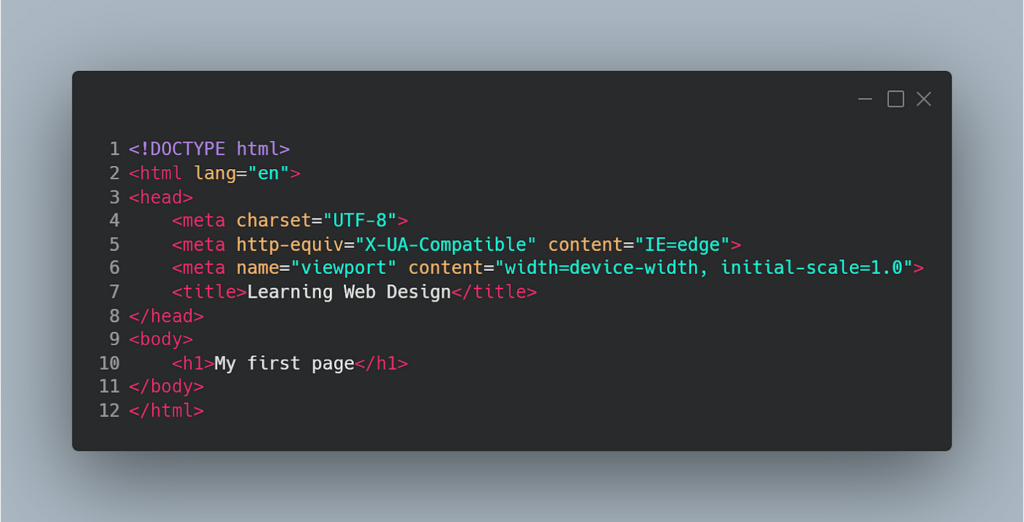In today’s digital age, web development has become one of the most in-demand skills. Whether you’re looking to change careers, improve your tech skills, or simply learn to code, mastering HTML, CSS, and JavaScript is the key to building dynamic and engaging websites. While these languages might seem intimidating at first, with the right approach and dedication, you can become proficient in just a few months.
This article will guide you through the process of mastering the essential front-end web development languages—HTML, CSS, and JavaScript—by outlining an effective learning strategy and highlighting the best resources, including IT training, online IT courses, and coding tutorials to help you on your journey.

Why HTML, CSS, and JavaScript Are Essential
Before diving into learning, it’s important to understand why these three languages form the foundation of web development.
- HTML (Hypertext Markup Language): HTML is the backbone of every website. It structures the content on the page, including headings, paragraphs, images, and links. Mastering HTML is the first step in learning how to build a website from scratch.
- CSS (Cascading Style Sheets): Once the structure is in place, CSS comes in to style the website. It controls the layout, colors, fonts, and overall design. A website without CSS would look plain and unattractive. Learning CSS allows you to transform a basic webpage into a visually appealing one.
- JavaScript: JavaScript brings your website to life. With JavaScript, you can make your site interactive, adding elements such as dropdown menus, sliders, and form validations. It’s also the most popular language for adding dynamic content that responds to user inputs.
Mastering these three languages is crucial for anyone interested in front-end development, and it’s possible to gain proficiency through structured learning plans, programming courses, and hands-on coding bootcamp experiences.
Step 1: Build a Strong Foundation with HTML
Start by focusing on HTML, the simplest of the three languages. Here’s how to approach learning it:
- Understand the Basics: Begin by learning the core HTML tags like
<h1>,<p>,<a>, and<img>. These tags help structure content and provide a solid base for building more complex webpages. - Create Simple Projects: One of the best ways to retain knowledge is through coding exercises. Start by building simple web pages like a personal bio or a landing page for a fictional product. These small projects will help you understand how HTML functions in a real-world context.
- Use Online Resources: There are plenty of online IT courses and free coding tutorials that teach HTML. Platforms like freeCodeCamp, Codecademy, and W3Schools are excellent starting points for programming beginners.
Once you’ve mastered HTML, you’ll be ready to move on to CSS to enhance the look of your website.
Step 2: Style Your Websites with CSS
CSS gives you the power to design and style your HTML content. Here’s how you can start learning CSS effectively:
- Start with Basic Styling: Learn how to style individual elements, such as adding colors, changing font sizes, and manipulating layouts. Focus on understanding how to use selectors, properties, and values.
- Experiment with Flexbox and Grid Layouts: CSS Flexbox and Grid are modern layout techniques that make designing responsive websites easier. These tools are crucial for creating websites that look good on any screen size, from desktop monitors to smartphones.
- Work on Real Projects: Try creating simple websites such as portfolios or blogs using both HTML and CSS. This hands-on approach will allow you to solidify your understanding and build confidence in using CSS.
- Utilize Resources: There are many tech skills training programs that focus on CSS. Websites like CSS-Tricks offer in-depth tutorials and examples to help you master advanced CSS techniques. Additionally, free platforms like Coursera and Udemy provide online IT courses that cover CSS in detail.
Step 3: Add Interactivity with JavaScript
JavaScript is where the magic happens in web development. It allows you to make your website interactive, transforming it from a static page into a dynamic experience for users. Here’s how you can approach JavaScript:
- Learn the Basics: Begin with understanding variables, functions, loops, and events. These fundamental concepts are key to working with JavaScript.
- Start Building Interactive Elements: Once you grasp the basics, start adding dynamic elements to your website. Build simple features like interactive forms, image sliders, or a basic to-do list app.
- Use JavaScript Libraries: After mastering vanilla JavaScript, you can dive into popular libraries like jQuery or frameworks like React. These tools simplify development and make your code more efficient.
- Practice Through Projects: Continue to improve by working on larger projects. Consider creating a web-based calculator, a weather app, or a dynamic blog. These projects will allow you to put your JavaScript skills to the test and add an impressive portfolio to your resume.
Many coding bootcamps offer full-time or part-time courses focused on software development, including JavaScript and front-end development. Bootcamps are great for those looking to fast-track their learning and gain practical experience through projects and collaborations.
How to Stay on Track and Succeed
Learning HTML, CSS, and JavaScript in a few months requires dedication, consistency, and the right resources. Here are some tips to help you succeed:
- Set Learning Goals: Break your learning into manageable chunks. For example, spend two weeks on HTML, another two weeks on CSS, and devote the rest of your time to JavaScript. This structured approach will help you stay on track and avoid feeling overwhelmed.
- Practice Daily: Consistency is key. Set aside time each day to code, even if it’s just for 30 minutes. Frequent practice helps solidify your understanding of new concepts.
- Enroll in Structured Courses: Consider enrolling in programming courses or coding bootcamps that provide a clear learning path. These courses often come with projects, assessments, and mentor support to guide you along the way.
- Participate in Coding Challenges: Websites like LeetCode, Codewars, and HackerRank offer coding challenges that allow you to practice solving real-world problems. These platforms are perfect for applying what you’ve learned in a fun and engaging way.
- Join a Coding Community: Connecting with other learners can keep you motivated. Consider joining online communities or attending local meetups. These communities often offer coding tutorials, peer support, and opportunities to collaborate on projects.
Resources for Learning HTML, CSS, and JavaScript
- freeCodeCamp: Offers a full curriculum that covers front-end development from scratch, including HTML, CSS, and JavaScript.
- Codecademy: Interactive courses that take you through coding lessons in real-time with plenty of practice exercises.
- Udemy: Provides affordable online IT courses with in-depth explanations on web development, including JavaScript frameworks and advanced topics.
- Treehouse: A comprehensive learning platform with courses on everything from programming for beginners to advanced coding.

Mastering web development is within your reach, even if you start as a complete beginner. By focusing on HTML, CSS, and JavaScript, and leveraging resources like IT training, coding tutorials, and programming courses, you can build your skills rapidly.
Whether you’re preparing for a career in software development, data science training, or simply learning for personal growth, web development is a valuable skill set that opens up countless opportunities in the tech world. Start your journey today, and in just a few months, you could be building professional-grade websites from scratch.



